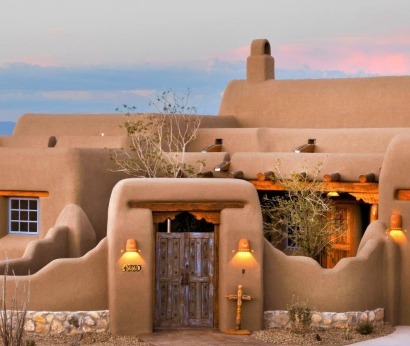
These five changes represent successful efforts across the industry to improve its environmental impact.
Realizing the impact of many traditional building materials, the construction industry is now taking advantage of greener alternatives. Experts predict the sustainable construction market will grow by 11% by 2026.
Concrete is a valuable resource in the construction industry, creating solid building foundations and structures. Unfortunately, it has a high environmental impact.
Precast concrete is factory-made to exact measurements, reducing the emissions used in the manufacturing process. This material is often used in bridges, parking garages and commercial buildings. It’s durable, able to withstand various weather conditions without cracking.
Lumber remains one of the most popular building materials out there for structure and design. Unfortunately, excessive use of this wood causes deforestation and it often goes to waste. More construction companies are reclaiming the leftover wood from other projects to keep it out of landfills and prevent deforestation.
Adobe is a centuries-old brick-making technique that uses natural materials and is still used throughout the Americas and the Middle East. Made from clay, straw and soil, no carbon producers don’t need emissions to make them. These materials are insulating, saving property owners money on temperature regulation.
Since it can replace wood, using adobe bricks reduces deforestation. It’s also highly recyclable, making it one of the most sustainable building materials out there.
This timber is stronger than traditional wood and has high water resistance. It lasts longer than traditional timber and its overall durability makes it a worthy replacement for concrete and steel items.
Laminated timber has a lower carbon footprint than more conventional materials. It’s also easier to work with, cutting down project time and emissions from machinery used to install it.
Bamboo is one of the most sustainable materials out there. It is a strong but flexible material that works well for various construction projects.
Technically a grass, you can easily harvest bamboo as it regrows quickly. Growing the crop has its own advantages, including absorbing more carbon dioxide than trees. Due to its structure, companies often use bamboo as support, roofing and scaffolding.
More industries are using materials made from recycled plastic. More than 130 million tons of single-use plastic gets used each year. This material is one of the highest carbon producers in the world.
Construction companies are embracing new materials made from previously used plastic. This keeps the items out of landfills and reduces emissions from new material creation.
Though equipment and materials make up a large part of the industry’s environmental impact, small things on a site also contribute. By creating better practices on a construction site, managers can significantly reduce on-the-job waste.
Sustainable site practices include prohibiting smoking, treating on-site water for drinking and providing recycling containers and encouraging their use for plastic bottles and food containers.
The industry regularly contributes around 145 million tons of debris from landfills. It’s a convenient way to dispose of project waste but has devastating environmental effects. However, many companies are decreasing their impact by embracing other disposal methods.
Deconstruction involves carefully removing materials during the demolition process so they can get reused and recycled. It significantly reduces waste by preventing the number of materials that end up in landfills and reduces the need for production of new items. This process is becoming a small industry of its own, creating job opportunities and career training options.
Another option is selling old construction equipment. It’s no secret that the production of large machinery can cause significant waste. They also can take up a lot of space in junkyards and landfills.
Selling old equipment to a consignment program is a way for companies to increase their yearly income while responsibly disposing of old machinery. Through consignment programs, dealers take possession of this equipment and sell it for the previous owner in exchange for a portion of the sale price.
Heavy equipment auctions are also a great way to make money while recycling old equipment. While newer and in-demand options sell better, it’s surprising what others are willing to bring to life for their personal or professional projects.
Just as the vehicle industry is moving toward electric and hybrid cars, construction equipment is also producing more efficient machinery. These machines produce little to no emissions compared to their traditional counterparts and are set to take over the majority of products sold.
There are many options already on the market, with many producers dedicated to reducing high-emissions equipment:
Paper is a staple of the construction industry, used to track data, make blueprints and draw diagrams. The paper production process is another major contributor to deforestation and can easily end up in landfills, releasing carbon into the atmosphere.
This problem is exacerbated when these items have laminate film on them to protect them on a site. That material isn’t recyclable.
More companies are embracing paperless business by replacing these items with virtual programs on phones, tablets and computers. Using cloud software, managers can easily share plans, instructions and information with their workers without a piece of paper entering the area.
Offices are also using programs that can virtually send and sign contracts as well as create invoices and track materials.
The construction industry is a large contributor to global emissions but is making great strides toward more sustainable practices.
Whether through equipment, planning or disposal, there are many ways to improve the industry to create a healthier planet. With an increasing global population, society needs homes, businesses and infrastructure. Reducing emissions in the construction industry through vehicles, devices and recycling opportunities allows the industry to preserve the environment for future generations.

